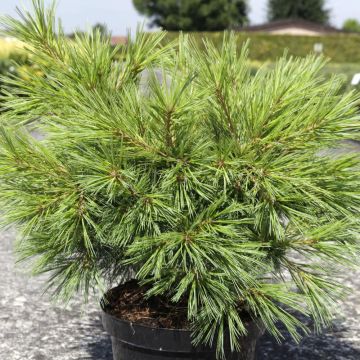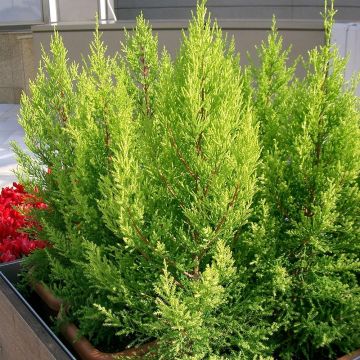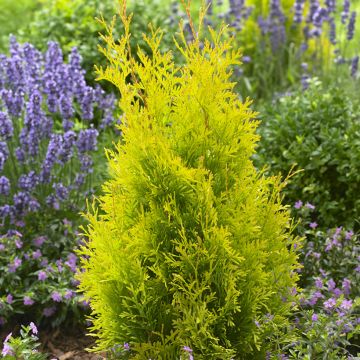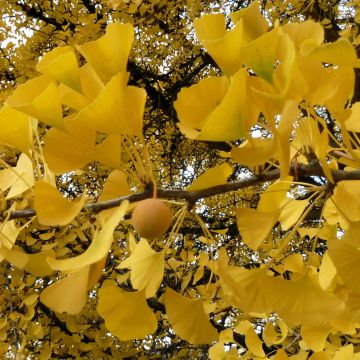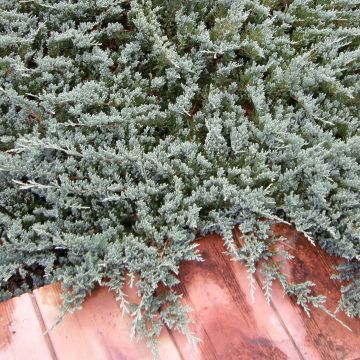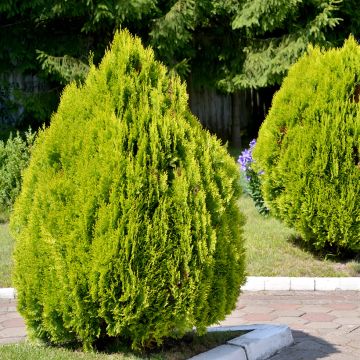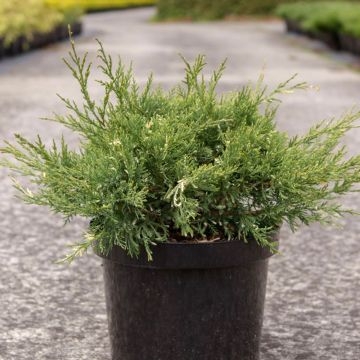

Pinus mugo Gnom - Dwarf Mountain Pine


Pinus mugo Gnom - Dwarf Mountain Pine
Pinus mugo Gnom - Dwarf Mountain Pine
Pinus mugo Gnom
Dwarf Mountain Pine, Swiss Mountain Pine, Mugo Pine
This item cannot be shipped to the selected country
Delivery charge from €5.90
Delivery charge from €5.90
Delivery to Corse prohibited
More information
Schedule delivery date,
and select date in basket
This plant carries a 24 months recovery warranty
More information
We guarantee the quality of our plants for a full growing cycle, and will replace at our expense any plant that fails to recover under normal climatic and planting conditions.
From €5.90 for pickup delivery and €6.90 for home delivery
Express home delivery from €8.90.
From €5.90 for pickup delivery and €6.90 for home delivery
Express home delivery from €8.90.
Delivery to Corse prohibited: UE law prohibits the import of this plant from mainland France to Corse as part of the fight against Xylella fastidiosa. Please accept our sincere apologies.
More information
Does this plant fit my garden?
Set up your Plantfit profile →
Description
The Pinus mugo 'Gnom' is a compact form of mountain pine with a wider than tall pyramidal habit. Slow-growing, it can reach a height of 3m (9 ft 10 in) at maturity. Very hardy and not demanding in terms of soil, wind-resistant, it is a plant for full sun, or possibly light shade. This variety is suitable for container cultivation, provided it is pruned a little to control its growth, as well as for large rockeries.
The Pinus mugo, also known as mountain pine, is an evergreen conifer of the Pine family. It is an endemic species of European mountains. It is found at subalpine level, avoiding summer heat, from the Spanish sierras, through the high Alpine and Pyrenean massifs, to the Balkans. It only descends to an altitude of 200m (656 ft 2 in) in Central Europe. In the wild, it slowly reaches 3 to 4 meters (9 feet 10 inches to 13 feet 1 inches) in all directions, adopting a windswept silhouette that reflects its habitat. It is a very hardy species, well adapted to mountain climates. It is also called "pin couché" due to its very knotty wood and its often creeping branches.
The 'Gnom' variety is quite old, as it was selected in 1890, following a sowing carried out in a Dutch nursery. It has since become a classic among conifers cultivated in nurseries. This 'Gnom' mountain pine grows slowly to form a more or less swollen and rounded pyramid at the base. In 10 years, it reaches about 1.50m (4 ft 11 in) in height and 2m (6 ft 7 in) in width, and at maturity (30 or 40 years), up to 3m (9 ft 10 in) in height and 4m (13 ft 1 in) in width. The foliage is dark green, the needles are grouped in pairs and measure about 5 to 8cm (2 to 3.1 in), and the branches are dense, forming a very compact mass of vegetation. Female cones measure 2 to 6cm (0.8 to 2.4 in) and are erect at the ends of branches. This pine adapts to many types of soils, from slightly acidic to slightly alkaline, and from moist to moderately dry. It prefers full sun, but can tolerate light shade. Very cold resistant (-30°C) as well as wind resistant, it is not afraid of snow either.
The 'Gnom' mountain pine will find its place in all gardens, urban or rural, even the smallest ones, planted alone, in a bed or in a rockery. It can also be used in a large pot on the terrace or balcony. In this case, after the first few years, it will be advisable to lightly prune it every year to refine its shape and limit its growth. It works wonders in a Japanese garden, and goes well with large stones, the geometric lines of swimming pools, and masonry works. It can be associated with complementary grasses, or with low and spreading dwarf conifers, such as the Juniperus horizontalis 'Icee Blue' with its blue foliage, or with graphically shaped foliage, such as the Chamaecyparis obtusa Gold Drop which deploys its feathery green-yellow branches on multiple levels. Columnar conifers will also provide contrast in terms of shape, and even colour, such as the Taxus baccata 'Ivory Tower' with its yellow and then cream foliage in winter.
Report an error about the product description
Pinus mugo Gnom - Dwarf Mountain Pine in pictures
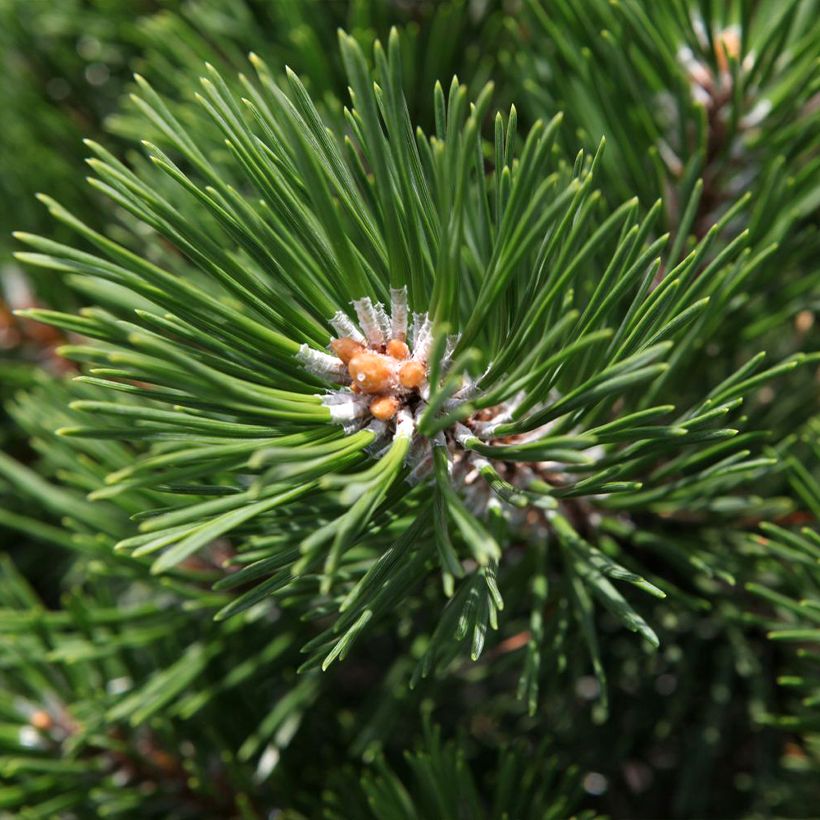





Plant habit
Foliage
Botanical data
Pinus
mugo
Gnom
Pinaceae
Dwarf Mountain Pine, Swiss Mountain Pine, Mugo Pine
Cultivar or hybrid
Other Pinus - Pine
Planting and care
The Pinus mugo 'Gnom' is planted from September to November and from February to April in well-drained, moist, even poor and slightly chalky soil. It only fears excessively dry soils in summer and scorching temperatures. Choose a sunny location, or at worst slightly shaded in hot climates. Soak the root balls well before planting. Optionally, add organic amendment during planting and water generously in the first years, and in case of prolonged drought. You can apply a special conifer fertilizer every year in April and cultivate the soil in summer. Due to its slow growth, it is not necessary to prune this conifer, unless you want to train it as a bonsai or cloud shape.
Planting period
Intended location
Care
This item has not been reviewed yet - be the first to leave a review about it.
Conifers
Haven't found what you were looking for?
Hardiness is the lowest winter temperature a plant can endure without suffering serious damage or even dying. However, hardiness is affected by location (a sheltered area, such as a patio), protection (winter cover) and soil type (hardiness is improved by well-drained soil).

Photo Sharing Terms & Conditions
In order to encourage gardeners to interact and share their experiences, Promesse de fleurs offers various media enabling content to be uploaded onto its Site - in particular via the ‘Photo sharing’ module.
The User agrees to refrain from:
- Posting any content that is illegal, prejudicial, insulting, racist, inciteful to hatred, revisionist, contrary to public decency, that infringes on privacy or on the privacy rights of third parties, in particular the publicity rights of persons and goods, intellectual property rights, or the right to privacy.
- Submitting content on behalf of a third party;
- Impersonate the identity of a third party and/or publish any personal information about a third party;
In general, the User undertakes to refrain from any unethical behaviour.
All Content (in particular text, comments, files, images, photos, videos, creative works, etc.), which may be subject to property or intellectual property rights, image or other private rights, shall remain the property of the User, subject to the limited rights granted by the terms of the licence granted by Promesse de fleurs as stated below. Users are at liberty to publish or not to publish such Content on the Site, notably via the ‘Photo Sharing’ facility, and accept that this Content shall be made public and freely accessible, notably on the Internet.
Users further acknowledge, undertake to have ,and guarantee that they hold all necessary rights and permissions to publish such material on the Site, in particular with regard to the legislation in force pertaining to any privacy, property, intellectual property, image, or contractual rights, or rights of any other nature. By publishing such Content on the Site, Users acknowledge accepting full liability as publishers of the Content within the meaning of the law, and grant Promesse de fleurs, free of charge, an inclusive, worldwide licence for the said Content for the entire duration of its publication, including all reproduction, representation, up/downloading, displaying, performing, transmission, and storage rights.
Users also grant permission for their name to be linked to the Content and accept that this link may not always be made available.
By engaging in posting material, Users consent to their Content becoming automatically accessible on the Internet, in particular on other sites and/or blogs and/or web pages of the Promesse de fleurs site, including in particular social pages and the Promesse de fleurs catalogue.
Users may secure the removal of entrusted content free of charge by issuing a simple request via our contact form.
The flowering period indicated on our website applies to countries and regions located in USDA zone 8 (France, the United Kingdom, Ireland, the Netherlands, etc.)
It will vary according to where you live:
- In zones 9 to 10 (Italy, Spain, Greece, etc.), flowering will occur about 2 to 4 weeks earlier.
- In zones 6 to 7 (Germany, Poland, Slovenia, and lower mountainous regions), flowering will be delayed by 2 to 3 weeks.
- In zone 5 (Central Europe, Scandinavia), blooming will be delayed by 3 to 5 weeks.
In temperate climates, pruning of spring-flowering shrubs (forsythia, spireas, etc.) should be done just after flowering.
Pruning of summer-flowering shrubs (Indian Lilac, Perovskia, etc.) can be done in winter or spring.
In cold regions as well as with frost-sensitive plants, avoid pruning too early when severe frosts may still occur.
The planting period indicated on our website applies to countries and regions located in USDA zone 8 (France, United Kingdom, Ireland, Netherlands).
It will vary according to where you live:
- In Mediterranean zones (Marseille, Madrid, Milan, etc.), autumn and winter are the best planting periods.
- In continental zones (Strasbourg, Munich, Vienna, etc.), delay planting by 2 to 3 weeks in spring and bring it forward by 2 to 4 weeks in autumn.
- In mountainous regions (the Alps, Pyrenees, Carpathians, etc.), it is best to plant in late spring (May-June) or late summer (August-September).
The harvesting period indicated on our website applies to countries and regions in USDA zone 8 (France, England, Ireland, the Netherlands).
In colder areas (Scandinavia, Poland, Austria...) fruit and vegetable harvests are likely to be delayed by 3-4 weeks.
In warmer areas (Italy, Spain, Greece, etc.), harvesting will probably take place earlier, depending on weather conditions.
The sowing periods indicated on our website apply to countries and regions within USDA Zone 8 (France, UK, Ireland, Netherlands).
In colder areas (Scandinavia, Poland, Austria...), delay any outdoor sowing by 3-4 weeks, or sow under glass.
In warmer climes (Italy, Spain, Greece, etc.), bring outdoor sowing forward by a few weeks.




































